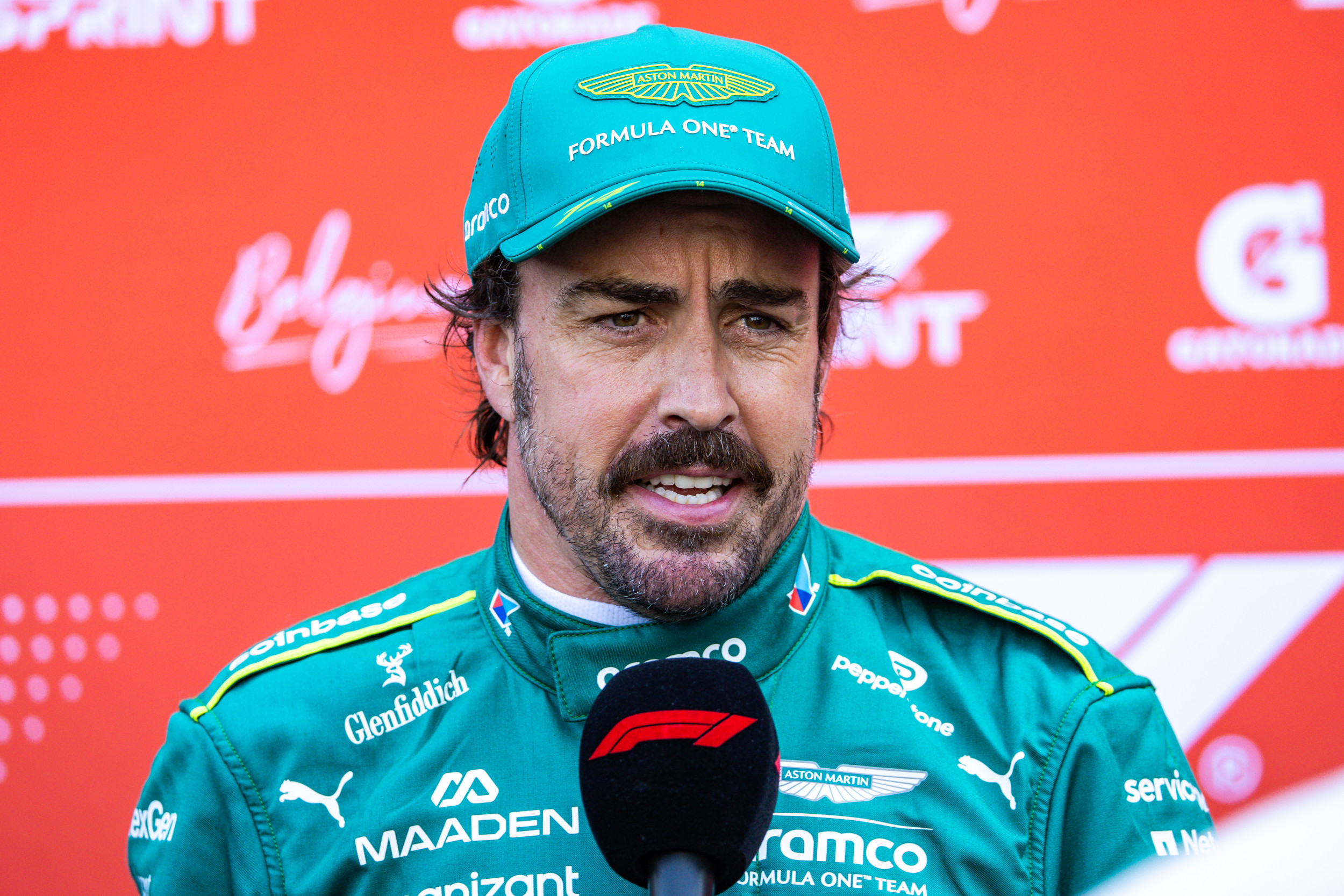
Aston Martin Formula One driver Fernando Alonso has revealed a cautious approach in the wet-weather racing argument after the previous race at Spa-Francorchamps saw the FIA delay the race start by 80 minutes due to rain.
Drivers complained of poor visibility after the formation lap, which led to a red flag situation. The FIA delayed the race start until the rain cloud had passed. However, the sun shone brightly soon after, leaving teams like Red Bull, which had opted for a wet-weather setup on its car, at a disadvantage.
While many criticized the FIA for being too cautious, others applauded the decision, highlighting the blinding spray F1 cars left behind, causing a significant drop in visibility. Speaking on the matter of racing in the wet, Alonso pointed out the wider tires F1 adopted in recent years as a contributing factor. He told the media ahead of the Hungarian GP:
“I think since 2017, with that set of regulations and the wide tyres, the visibility is worse. But it’s a really difficult topic.
Jayce Illman/Getty Images
“We all want to race, but if you are alone, you can’t race. If you are in a group of cars, you cannot see anything, and we had unfortunately too many bad examples, especially in Spa, with poor visibility and very big accidents.
“We all want to be brave. We all want to be racing, and spectators at home as well. But then when an accident happens, we remember – there is nothing really wrong to wait another half an hour, you know, this is the way it is.”
Alonso also pointed out how a certain type of asphalt limits or amplifies the amount of spray. He said:
“Probably some of the asphalt in the circuits, they are a little bit different than what they’ve been in the past. Because we raced with a lot of water in Sepang [Malaysia], in different circuits, and it was always okay.
“And now this new generation of asphalt, which is very black and very grippy in dry conditions, is like a mirror in wet conditions. Visibility is not nice. But I don’t know what we can do there, or what the tyres can do in a very rough tarmac.”
The Spaniard suggested that all circuits could be laid with a similar asphalt, but it could have negative effects on the tires under dry conditions. He added:
“And even some of the highways, I have said many times that the highways, there are some that they have zero spray. So if we implement that tarmac in all the circuits as a normal rule, we will have zero spray.
“Then it will be a huge degradation, probably, in dry conditions – I don’t know. But then we can work from that and have a starting point. But I’m just a driver.”
